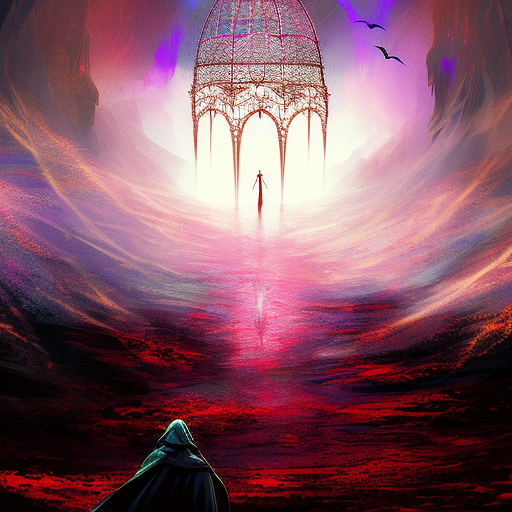One-line summary:
The third installment in Frank Herbert’s epic science fiction series, “Children of Dune” delves into the complex political and religious landscape of the desert planet Arrakis, as the descendants of Paul Atreides navigate their destiny amidst power struggles and ecological challenges.
The Rise of the Atreides Children
“Children of Dune” picks up the story several years after the events of “Dune Messiah.” The twins Leto and Ghanima, children of Paul Atreides, have matured into young adults with extraordinary abilities. Leto, burdened with prescience, can see the future and the path humanity is destined to follow. Ghanima, on the other hand, possesses the ability to access the memories of her ancestors. As the heirs to the Atreides legacy, they find themselves at the center of a dangerous political game.
The Power Struggles on Arrakis
Arrakis, the desert planet known for its valuable resource, melange or spice, remains a focal point of power struggles. The Atreides children, along with their mother Lady Jessica, face opposition from various factions, including the Bene Gesserit sisterhood, the Spacing Guild, and the Tleilaxu, a secretive group of genetic manipulators. These factions seek to control the spice and exploit the Atreides lineage for their own gain.
Meanwhile, the Empire is in turmoil as Emperor Shaddam IV’s rule weakens, and his heir, Farad’n, is being groomed for the throne. The Atreides children become pawns in the political maneuvering, as their unique abilities and bloodline make them valuable assets to those seeking power.
The Ecological Transformation
As the story unfolds, a new threat emerges on Arrakis. The planet’s ecology, shaped by the sandworms that produce the spice, begins to change. Leto, driven by his visions and a desire to save humanity, undergoes a radical transformation. He merges with sandworms, becoming a hybrid creature known as a sandtrout. This metamorphosis grants him immense power and longevity but also forces him to sacrifice his humanity.
Leto’s transformation is not only physical but also spiritual. He becomes the God Emperor, ruling over humanity with an iron fist for thousands of years. His reign brings stability and peace but at the cost of individual freedom. The people of the Empire are forced to live under his absolute rule, with Leto manipulating every aspect of their lives to ensure the survival of humanity.
Key Takeaways:
- Power struggles and political maneuvering are central themes in “Children of Dune,” as various factions vie for control over Arrakis and the Atreides bloodline.
- The ecological transformation of Arrakis highlights the delicate balance between human exploitation and the preservation of natural resources.
- The consequences of absolute power and the sacrifices necessary for the greater good are explored through Leto’s transformation into the God Emperor.
“To attempt an understanding of Muad’Dib without understanding his mortal enemies, the Harkonnens, is to attempt seeing Truth without knowing Falsehood. It is the attempt to see the Light without knowing Darkness. It cannot be.”
In “Children of Dune,” Frank Herbert continues to weave a complex and thought-provoking narrative that explores themes of power, religion, ecology, and the human condition. As the Atreides children navigate their destiny and face the challenges of a changing world, readers are invited to ponder the consequences of power and the sacrifices required for the survival of humanity.












